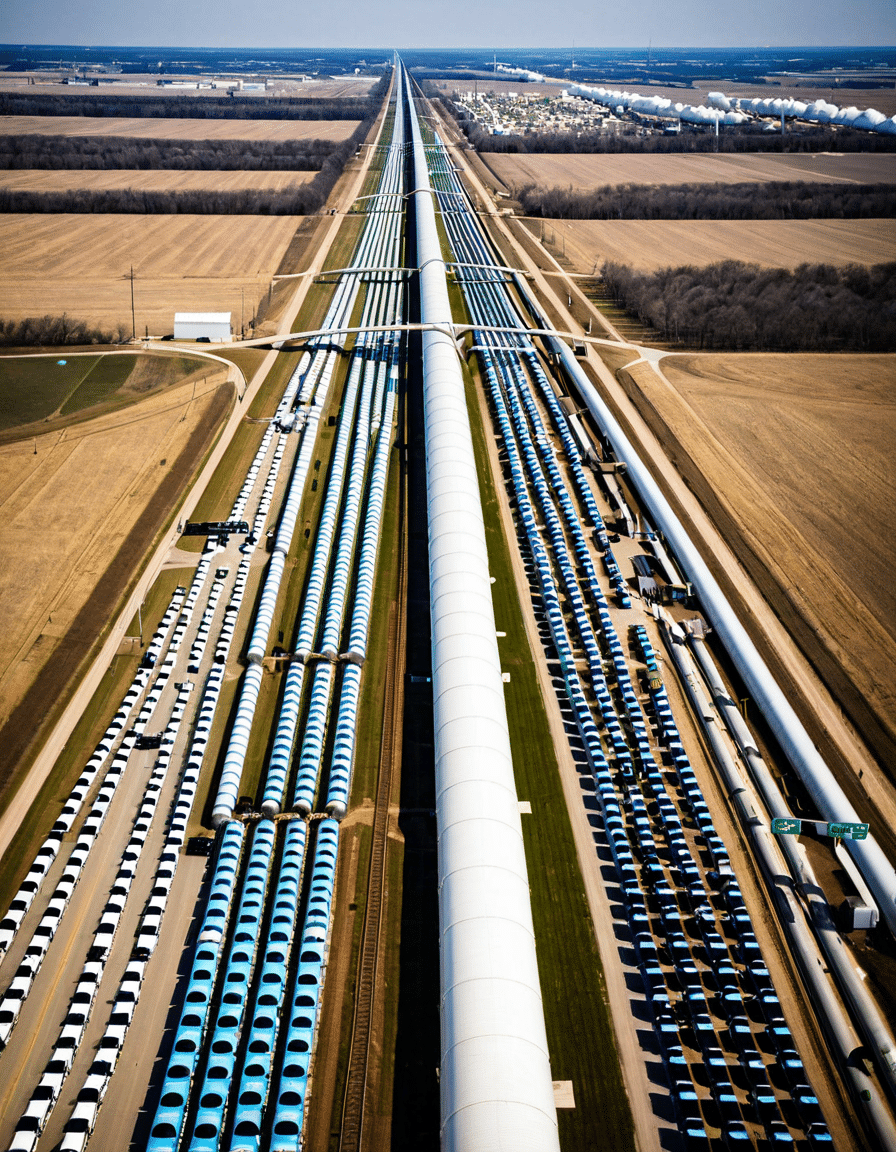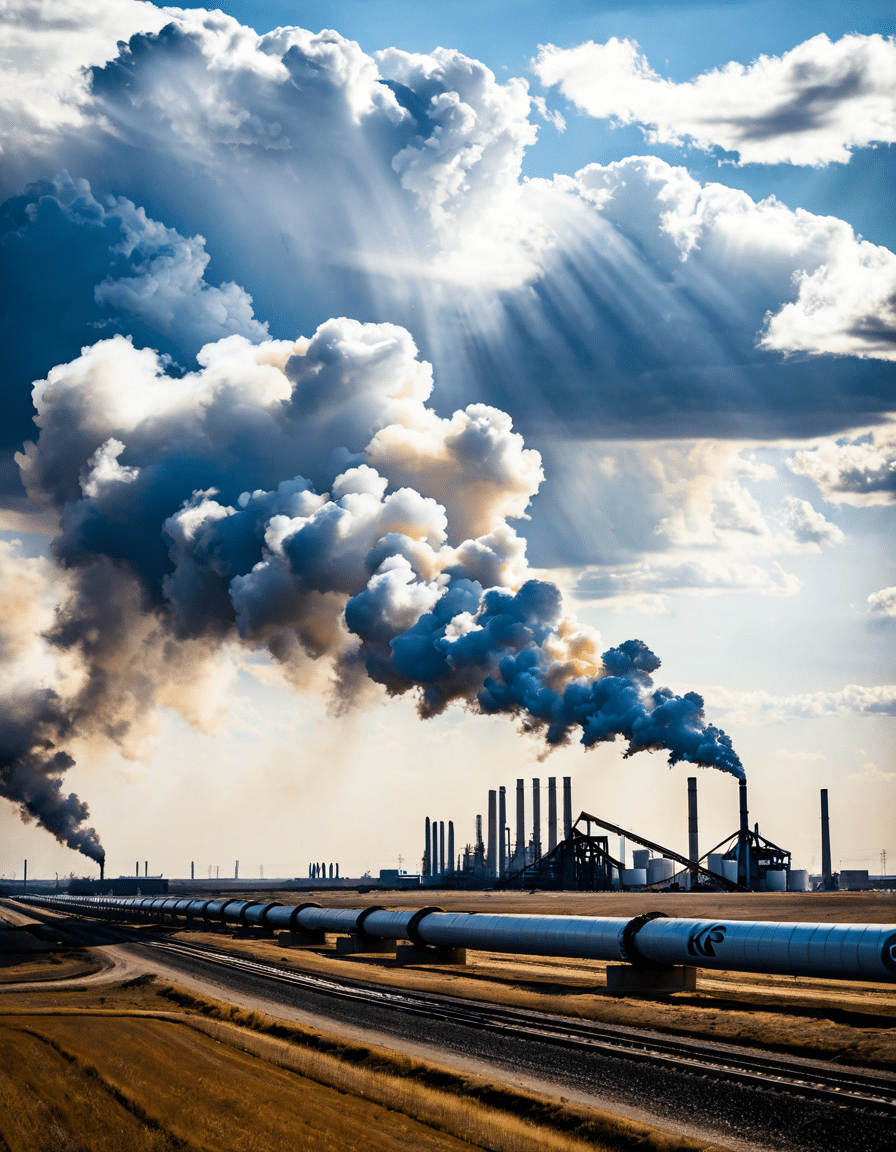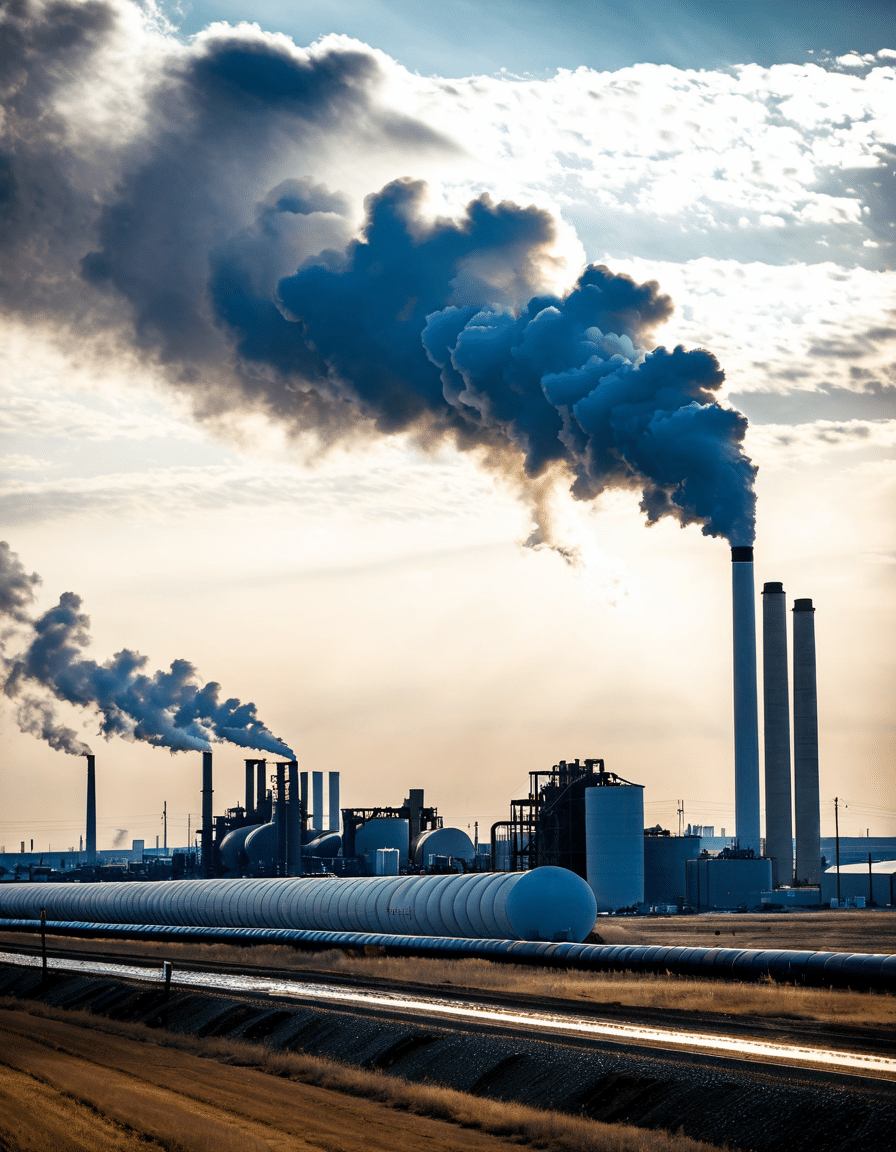The Keystone Pipeline is at the center of an ongoing debate that significantly shapes North America’s energy landscape. This extensive pipeline system, which transports crude oil from Canada to various U.S. locations, has substantial implications for local economies, national energy independence, and international relations. As discussions surrounding this critical infrastructure evolve, it’s crucial to dive into not only the operational but also the political dimensions that surround the Keystone Pipeline. Given the pressing need for sustainable energy alternatives, understanding this pipeline’s influence becomes even more pressing.
The Keystone Pipeline’s Role in North America’s Energy Landscape
The Keystone Pipeline, first established in 2010, has grown into a vital artery for crude oil transport, making it a critical component of North America’s energy infrastructure. Spanning over 2,600 miles, the pipeline connects the resource-rich oil sands of Alberta, Canada, to various refineries in the United States, particularly in states like Illinois and Texas. With this significant throughput of heavier crude oil, the Keystone Pipeline is touted by proponents as a key player in securing energy independence for the U.S., reducing reliance on foreign oil.
However, the pipeline’s operational presence isn’t without its share of controversies. Environmentalists argue that it exacerbates concerns related to climate change, as increased fossil fuel extraction and consumption could undermine efforts to reduce carbon emissions. This duality creates a dynamic where economic benefits often clash with urgent environmental needs. As the conversation about sustainable energy intensifies, the Keystone Pipeline emerges as a focal point where these conversations intersect.
In light of the ongoing debates about fossil fuels versus renewable resources, the Keystone Pipeline serves as a lens through which we can examine the complexities of energy policies today. The question remains: Can we find a balance between fueling our energy needs and safeguarding our environment? This inquiry plays a pivotal role in shaping the future discourse on energy.

Top 5 Ways the Keystone Pipeline Affects U.S. Energy Policy
Influence on the UAW (United Auto Workers) and Job Market
The UAW, or United Auto Workers, stands firmly in support of the Keystone Pipeline, vocalizing how it could create thousands of jobs in the automotive and energy sectors. During the construction and ongoing maintenance of the pipeline, numerous jobs have flourished, significantly impacting the job market, particularly in manufacturing-heavy states. The pipeline’s operations can yield immediate economic benefits for laborers, drawing their support and igniting discussions on job security within these critical industries.
As these jobs continue to be a lifeblood for local economies, the influence of the UAW cannot be understated. Their stance on energy policies reflects concerns about sustainable employment and economic growth, suggesting that shutting down or limiting operations of the pipeline may have dire consequences for workers. By the same token, the UAW’s advocacy serves as a reminder of the intricate dance between energy production and labor rights, highlighting how energy policies directly affect people’s livelihoods.
While the job creation aspect is appealing, it’s vital to weigh these advantages against the backdrop of an evolving energy landscape. The decisions made today about the Keystone Pipeline will ripple into the job market tomorrow, prompting communities to scrutinize the trade-offs involved.
Climate Change and Environmental Resistance on Interstate 95
Interstate 95 has become a hub of protests regarding the environmental implications of the Keystone Pipeline. Activists have rallied along the busy highway to protest against the environmental degradation linked to fossil fuel reliance. Critics argue that the pipeline exacerbates climate change by promoting the extraction and consumption of fossil fuels and raising concerns about its long-term sustainability.
These grassroots movements have surged, particularly in urban centers along Interstate 95, where air quality and water contamination are of significant interest. Protests against the pipeline have resulted in legislative momentum surrounding renewable energy initiatives, as public awareness amplifies the urgency for action on climate change. This rising tide of activism serves as a striking example of how community voices can shape energy policy on a national scale.
The cat-and-mouse game between pipeline supporters and environmental advocates represents a critical front in the climate change battle. Activists are making considerable headway, pushing for policies that prioritize renewable energy sources and diminish dependency on fossil fuels. This battle puts pressure on lawmakers to reconsider current energy policies and may pave the way for a more sustainable future.
Economic Impact Along Highway 1
Highway 1, known for its breathtaking views, may not seem like a hotspot for energy debates, but it’s felt the impact of the Keystone Pipeline nonetheless. Local economies along this scenic route have benefited significantly from increased commerce, thanks to the influx of workers and the supply chains associated with the pipeline’s operations. Increased business and job opportunities have led to economic growth, which, at first glance, seems like a win-win situation for the area.
However, this economic boom brings forth a contrasting narrative where environmentalists and residents raise alarms about potential ecological degradation. The pipeline’s encroachment on pristine environments has sparked heated discussions on preserving the natural beauty that attracts tourists in the first place. As businesses flourish in pockets along Highway 1, the urgent call for sustainable environmental stewardship grows louder.
The balancing act between economic growth and ecological preservation is at the forefront of energy debates today. Local businesses and communities face tough decisions: will they prioritize economic opportunity, or will they stand firm in their advocacy for preserving their natural landscapes?
Safety and Regulatory Concerns on Interstate 80
As a primary transport route, Interstate 80 plays a crucial role in moving materials essential for pipeline construction and maintenance. However, concerns about pipeline safety loom large, as fears of leaks and spills raise regulatory questions that affect the highway’s operations. Past incidents involving pipeline breaches have led to heightened scrutiny of federal regulations and a demand for stricter safety protocols to prevent disasters like those witnessed before.
Advocates for stringent safety measures argue that public welfare should come above corporate interests. Legislative discussions surrounding the Keystone Pipeline reflect this urgent need for regulatory clarity, emphasizing the responsibility of energy companies to prioritize safety in their operations. The episodes that have marred the pipeline’s history have served as wake-up calls for both policymakers and the public.
If the Keystone Pipeline continues to operate amid safety concerns, it risk creating a perilous situation. Ensuring the integrity and safety of the pipeline will remain a defining challenge in public discussions about energy policy and environmental responsibility moving forward.
Political Ramifications Seen During NH Primary Elections
The recent New Hampshire primary vividly illustrates the political divide over the Keystone Pipeline. Candidates have used their positions on the pipeline to sway voter sentiment, reflecting broader concerns about energy policy and environmental stewardship. Support for the pipeline comes often from candidates arguing economic growth, while opponents emphasize transitioning to cleaner energy sources.
This political battleground reveals how entrenched the issue of pipeline policy has become in the electoral landscape. Voters are concerned about the implications for energy security, job creation, and climate change. The divergent stances do not just reflect personal beliefs; they affect local economies and energy policies, showcasing how closely tied these political narratives are to community welfare.
As electoral races heat up, the ramifications of the Keystone Pipeline debates may reverberate beyond New Hampshire, influencing national narratives about energy policy. Candidates would do well to understand that their positions could be pivotal in shaping the country’s energy future.
Shifting Tides: The Future of Energy Policy Amidst Pipeline Controversies
As the spotlight remains on the Keystone Pipeline, it’s evident that the trajectory of U.S. energy policy is in a state of flux. The steadfast support from groups like the UAW confronts increasing grassroots activism demanding immediate action against climate change. This juxtaposition underlines a powerful tension that policymakers must navigate as they reconcile economic interests with environmental responsibilities.
In 2026, the rapid advancement of renewable energy technologies compels a reconsideration of the long-term viability of the Keystone Pipeline. The relationship between economic benefits and environmental impact leaves state and federal leaders at a crossroads. Every step towards a cleaner energy portfolio must weigh not only present fiscal gains but also the ongoing consequences for the environment and public health.
Ultimately, the ongoing discourses surrounding the Keystone Pipeline capture a broader narrative about energy in America. This controversy serves as a microcosm for the larger conversation: how do we balance the pressing needs for energy and economic growth with an urgent call for sustainability? These discussions will undoubtedly shape the country’s energy landscape for years to come. As we look ahead, the outcome of these debates will echo far beyond the neighborhoods of the UAW and the protests along Interstate 95—they will resonate through every corner of the nation.

Keystone Pipeline: Fun Facts and Trivia
The Making of a Controversy
When we think about the Keystone Pipeline, it’s more than just pipes and oil; it’s a story that intertwines energy, environment, and economics. Did you know that the construction of this pipeline has sparked debates that echo similar passions as some in sports? For example, just as athletes strive to reach their goals, the Keystone Pipeline was initially meant to create jobs and reduce energy costs. However, it’s faced plenty of opposition along the way, reminiscent of how mixed the reception can be for public figures. For instance, take Aaron Rodgers, known not just for his talent but also for his occasional controversial statements—imagine the kind of chatter if he engaged in energy debates! Curious about his wealth? You can check how that stacks up to the pipeline’s projected economic impact at his net worth link.
Environmental Impacts
The environmental concerns surrounding the Keystone Pipeline bring to mind the latest trends in sustainable building practices, like crawl space encapsulation to improve energy efficiency. Just as encapsulating a crawl space helps a home breathe better, environmental advocates argue that we need to “breathe” new life into our energy policies. It’s no surprise that viewers of Harvey Weinstein’s movies often discuss deeper societal issues—they can contrast their entertainment with real-world dilemmas like those posed by the pipeline. The discussions about environmental protection resemble similar fervent debates seen in other sectors of society, like sports or even comedy, where cow Puns are used to lighten tense conversations about serious subjects.
The Future of Energy
Looking at the potential future of energy in North America, the Keystone Pipeline reflects broader global dialogues, including Italy’s national team striving for soccer excellence on the international stage. Just like Italy’s robust sports strategy, energy strategies must adapt to economic pressures and climate realities. Speaking of trends, have you seen the buzz around brown Sambas? They’re the latest fashion statement that adds to the growing conversation around sustainability, just like the discussions surrounding energy pipelines and green alternatives. Understanding the full impact of such infrastructures is like following Sha’Carri Richardson’s racing schedule—watch closely, and you might see things unfold that can change the race for energy or environmental protection.
In conclusion, the Keystone Pipeline is more than just a piece of infrastructure; it’s a catalyst for discussions across various fronts, from environmental sustainability to economic pressures. It’s these connections that remind us our world is a web of intricate relationships—just like a network of pipelines!




